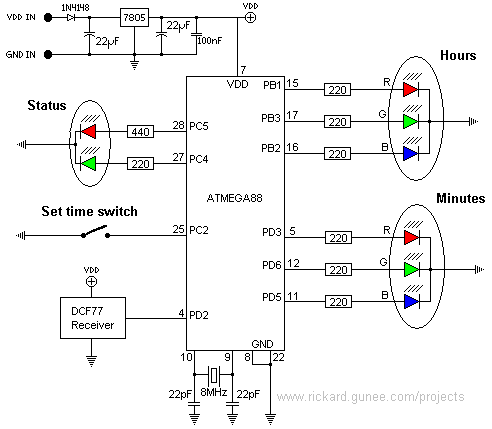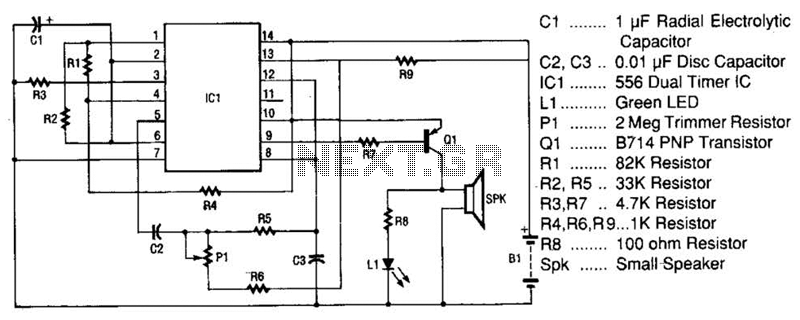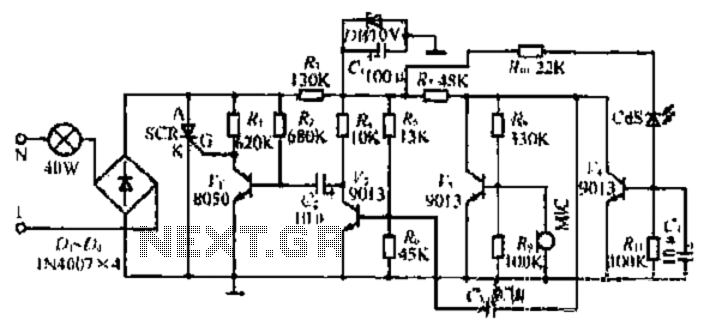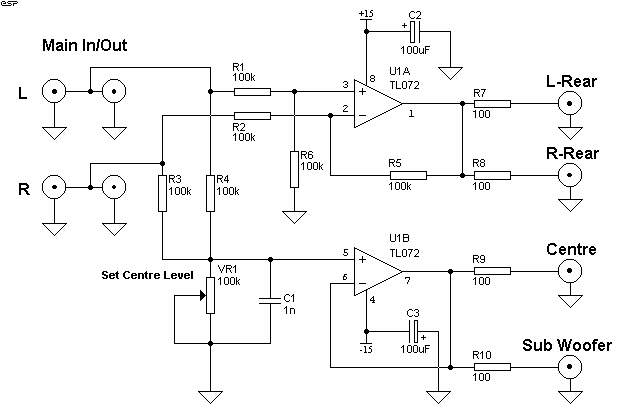
SOUND I F FOR COLOR TV

Utilizes three transistor stages and a Foster-Seeley discriminator to produce an audio output of 1 V peak-to-peak. -D. Bray, Solid State Makes Debut in Big Screen Color TV, Electronics, 39:8, p 99-105.
The circuit in question employs a combination of three transistor stages along with a Foster-Seeley discriminator to achieve an audio output of 1 V peak-to-peak. The three transistor stages serve to amplify the audio signal, enhancing its strength and ensuring it reaches the desired output level. Each transistor stage can be configured as a common emitter amplifier, which is effective for voltage amplification while maintaining a reasonable bandwidth.
The Foster-Seeley discriminator is a crucial component in this circuit, primarily used for demodulating frequency-modulated signals. This type of discriminator operates by utilizing the phase relationship between the input signal and a reference signal, allowing it to effectively extract the audio information from the modulated carrier wave. The output of the Foster-Seeley discriminator is then fed into the final transistor stage, which further amplifies the demodulated audio signal to achieve the specified output of 1 V peak-to-peak.
In designing this circuit, attention must be paid to the biasing of each transistor to ensure optimal performance and linearity. Proper selection of resistor values for both the biasing network and the load resistors will be essential in achieving the desired gain and frequency response. Additionally, the layout of the circuit should minimize noise and interference, which can degrade audio quality.
Overall, this configuration illustrates a fundamental approach to audio amplification and demodulation in electronic circuits, showcasing the integration of discrete components to achieve a specific output requirement in audio applications.Uses three transislor stages und Foster-Seeley discriminotor to give audio output of 1 v peak to peak. -D. Bray, Solid State Makes Debut in Big Screen Color Tv, Electronics, 39:8, p 99-105. 🔗 External reference
The circuit in question employs a combination of three transistor stages along with a Foster-Seeley discriminator to achieve an audio output of 1 V peak-to-peak. The three transistor stages serve to amplify the audio signal, enhancing its strength and ensuring it reaches the desired output level. Each transistor stage can be configured as a common emitter amplifier, which is effective for voltage amplification while maintaining a reasonable bandwidth.
The Foster-Seeley discriminator is a crucial component in this circuit, primarily used for demodulating frequency-modulated signals. This type of discriminator operates by utilizing the phase relationship between the input signal and a reference signal, allowing it to effectively extract the audio information from the modulated carrier wave. The output of the Foster-Seeley discriminator is then fed into the final transistor stage, which further amplifies the demodulated audio signal to achieve the specified output of 1 V peak-to-peak.
In designing this circuit, attention must be paid to the biasing of each transistor to ensure optimal performance and linearity. Proper selection of resistor values for both the biasing network and the load resistors will be essential in achieving the desired gain and frequency response. Additionally, the layout of the circuit should minimize noise and interference, which can degrade audio quality.
Overall, this configuration illustrates a fundamental approach to audio amplification and demodulation in electronic circuits, showcasing the integration of discrete components to achieve a specific output requirement in audio applications.Uses three transislor stages und Foster-Seeley discriminotor to give audio output of 1 v peak to peak. -D. Bray, Solid State Makes Debut in Big Screen Color Tv, Electronics, 39:8, p 99-105. 🔗 External reference





